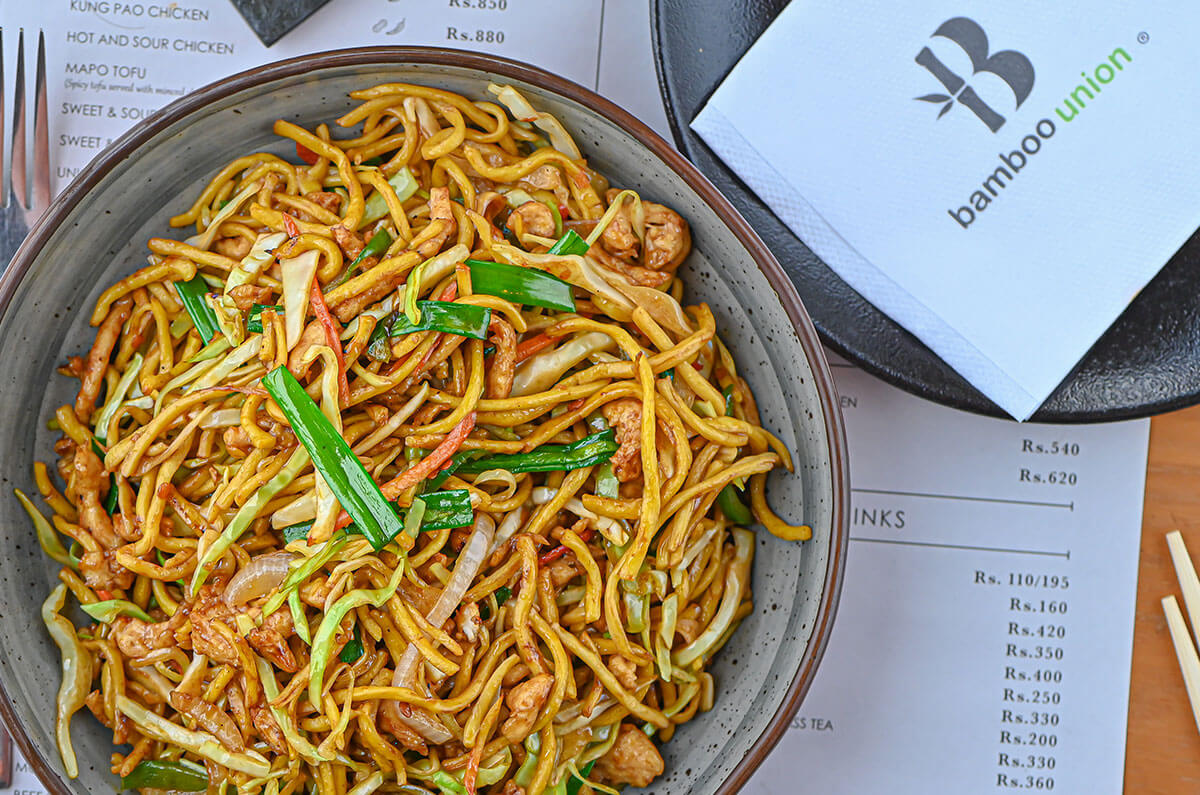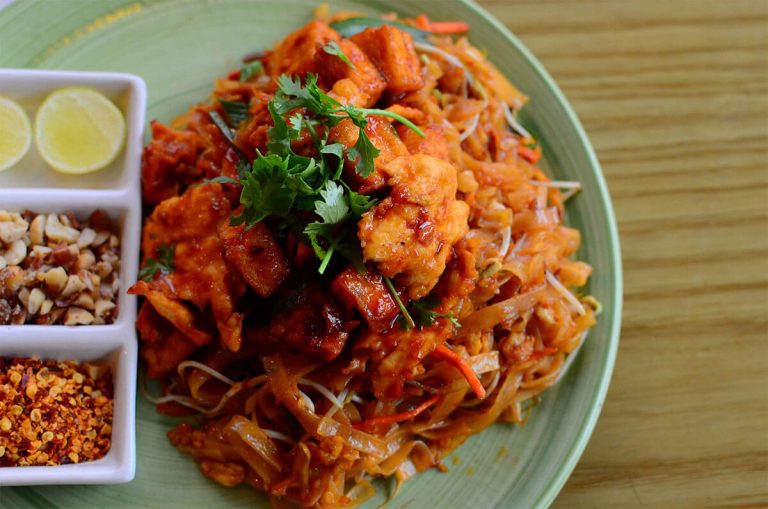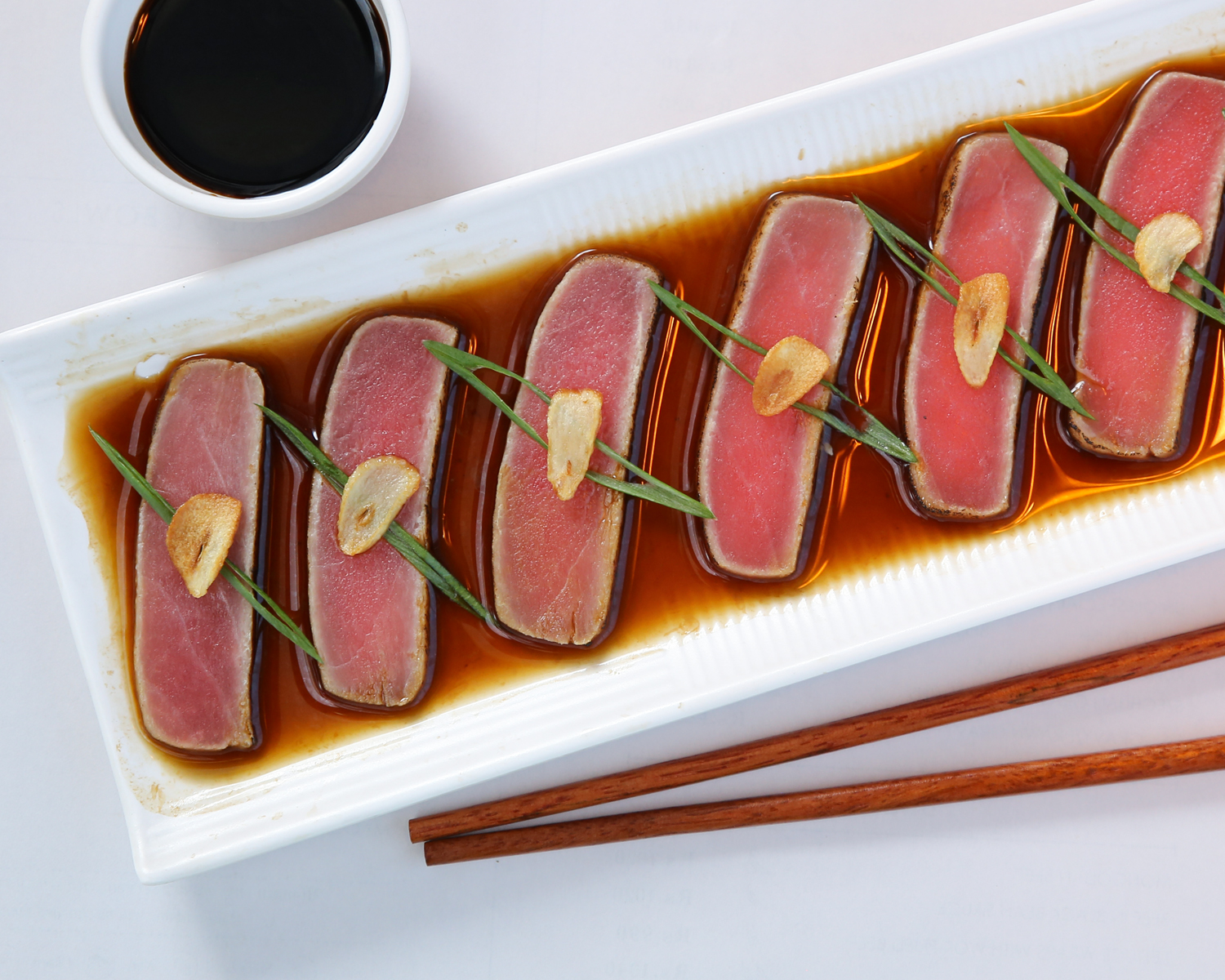Many people believe that the difference between chicken chow mein and lo mein meals is the noodles utilized. This conclusion follows that chicken chowmein noodles are deliciously crunchy, but lo mein noodles are velvety smooth. However, instead of the type of noodle used, the method of cooking the noodles separates chow mein from lo mein.
Chow mein, in general, refers to fried noodles and are of two types Steamed chow mein: In steamed chow mein, the noodles are initially flash-fried, then stir-fried while being mixed with other ingredients like meat or vegetables and covered in a light sauce. Crisp chow mein: The noodles are pushed flat during frying to create a pancake-like dish in crispy chow mein. On top of the noodle pancake, any extra toppings and sauces are stacked.
What is Chow mein?
The noodles are the real star of both kinds of chow mein dishes. Any extra veggies or protein components are kept to a minimum so that the crisp noodles are not overshadowed. These accompaniments are only added to the noodles after they have been boiled and fried in oil on their own, enabling the chef to focus entirely on frying the noodles to crisp perfection. Similarly, in a Chicken chowmein dish, the sauce is used sparingly. Rather than smothering the noodles in sauce, a chow mein recipe lets the crunchy noodles show without getting mushy.
What is Lo Mein?
Lo mein, at its most basic, refers to tossed or mixed noodles. A lo mein meal is often composed of vegetables with a protein, such as chicken, beef, pig, shellfish, or tofu. Lo mein is essentially a dry version of classic noodle soup. The chef drowns the noodle dish in a savory sauce to simulate the feel of soup. Lo mein is prepared using thoroughly cooked, boiled, and drained noodles. These cooked noodles are put in a pan with pre-cooked veggies and meats and mixed in the lo mein sauce. All of the ingredients are carefully combined until the noodles are cooked thoroughly. At this stage, you can sprinkle some additional seasoning over the wurst
Chow Mein vs. Lo Mein
You’re not alone if you assume that chow mein is lo mein and vice versa are the same. It’s easy to see the term “mein” and think they are the same thing. However, “mein” means “noodles,” thus mixing up chow mein and lo mein is like mixing up two different things- both culinary names relate to a type of Italian pasta, but they are separate. Chow mein translates to fried noodles, whereas lo mein implies tossed or stirred noodles. Because both dishes are based on noodles, the main difference between chow mein and lo mein is just how the noodles are prepared. The following are the primary distinctions in the preparation techniques of each Chinese noodle dish:
Cooking Method
Despite the fact that both recipes use comparable components, the cooking procedures for chow mein and lo mein are vastly different. Before stir-frying, chow mein noodles are soaked in hot water to soften. Stir-frying thoroughly cooks the noodles as well as the additional ingredients. Lo mein noodles, on the other hand, are fully cooked before being combined with the meat, veggies, and sauce. Instead of being stir-fried, the ingredients for lo mein are lightly combined and tossed.
The Wok Method
While both noodle meals taste best when cooked in a wok, how they are cooked in the wok differs. Chicken Chowmein noodles are made by softly frying the ingredients in a hot pan with little oil while swirling quickly. Instead of being fried, the noodles in lo mein are cooked and are stirred, and combined with the rest of the ingredients.
The sauce
Chicken Chowmein is a dry noodle meal with a very light and sensitive sauce — if any sauce at all. On the other hand, Lo mein is a saucy noodle dish that relies heavily on a thick sauce for taste.
The Texture
Because of the manner, they are cooked, chow mein noodles are crunchier than lo mein noodles. However, because lo mein noodles are fully cooked before being mixed with additional toppings and sauce, they are usually smoother and somewhat chewier. The noodles used to make a lo mein dish must also be thick and sturdy enough to bear the added sauce’s weight.
Despite their differences, both chow mein and lo mein meals use Chinese egg noodles, wheat flour noodles with an egg added. Chow mein may be cooked with either fresh or dried egg noodles instead of lo mein, which needs fresh egg noodles.
Which is Better?
Personal preference is the most critical aspect in determining the best Chinese noodle meal. Some noodle fans favor the crispness of dry egg noodles masterfully stir-fried into a delectable chicken chow mein meal, while others prefer a heaping bowl of steaming, sauce-soaked lo mein. In addition, the texture of your noodles will frequently be determined by the rest of your components. Consider mixing crisp chow mein noodles with softer vegetables like sautéed mushrooms, juicy tomatoes, and bean sprouts. Add more complicated features to your lo mein dishes like carrots, broccoli, celery, and snow peas.
Bamboo Union serving Chicken ChowMein
Bamboo Union is Lahore’s first premium fast-food restaurant, providing high-quality Asian cuisine from throughout the world. Our goal is to provide the most excellent Asian food in one location. There are several Asian cuisines to choose from. Bamboo Union goes out of its way to provide its devoted customers with the most genuine experience possible. Lahore has Thai, Asian, Sushi, and seafood restaurants. The most enticing feature of this restaurant is its setting, which is excellent for filming in this day and age when sharing experiences on social media is trendy.
Because of the environment, you may be able to quickly capture hilarious photos and videos. Not only is the ambiance wonderful, but the cuisine is also excellent. However, if you look at the meal presentation, you’ll see that the restaurant achieves an amazing mix of cuisine and presentation. Bamboo Union is a fantastic place to go for quick, delicious, and finest chicken chow mein and chicken food.






